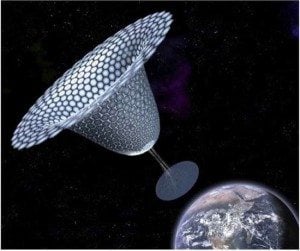…there is nothing more difficult to carry out, nor more doubtful of success, nor more dangerous to handle, than to introduce a new order of things.Political observer, ca. 1500 A.D.
The crowdfunding narrative has been dominated by tech startups, manufacturing projects, philanthropic projects, music, film, dance and a myriad of other endeavors.
 A vast majority are noble in their own right despite the occasional kobe beef jerky episode. Crowdfunding has helped to fund small businesses, create jobs and further the arts in ways that were unimaginable just ten years ago. Now there are thousands of people around the world that will attest to the power of crowdfunding to close funding gaps in various ways. That number grows by the day.
A vast majority are noble in their own right despite the occasional kobe beef jerky episode. Crowdfunding has helped to fund small businesses, create jobs and further the arts in ways that were unimaginable just ten years ago. Now there are thousands of people around the world that will attest to the power of crowdfunding to close funding gaps in various ways. That number grows by the day.
Having said that, we live in a world with some big problems to tackle. One hot button global topic is energy consumption. Personal beliefs and leanings aside, I think most agree that there is an issue with energy generation and consumption today. In short, consumption is quickly catching up to our collective ability to produce. That is to say nothing of any net effect on the environment or any associated geopolitical concerns among other considerations.
 What if crowdfunding could effectuate the change necessary to overhaul the way we create and consume energy? What if the public chose to support and partially fund large-scale, transformative projects aimed at helping to solve the world’s biggest problems? Could we align investor interests with this type of collective benefit?
What if crowdfunding could effectuate the change necessary to overhaul the way we create and consume energy? What if the public chose to support and partially fund large-scale, transformative projects aimed at helping to solve the world’s biggest problems? Could we align investor interests with this type of collective benefit?
 This phenomenon is starting to take hold today thanks to crowdfunding platforms like Mosaic. At a high level, Mosaic exists to align investor interests with the proliferation of renewable energy sources, or in their case terrestrial solar installations. Abundance Generation has a similar aim and is widely recognized as one of the largest equity-based crowdfunding platforms in the UK today.
This phenomenon is starting to take hold today thanks to crowdfunding platforms like Mosaic. At a high level, Mosaic exists to align investor interests with the proliferation of renewable energy sources, or in their case terrestrial solar installations. Abundance Generation has a similar aim and is widely recognized as one of the largest equity-based crowdfunding platforms in the UK today.
 Having said that, there is one researcher in the United States that hopes to take solar power to new heights.
Having said that, there is one researcher in the United States that hopes to take solar power to new heights.
John C. Mankins is President of Artemis Innovation Management Solutions LLC. He is an “internationally recognized leader in space systems and technology innovation, and as a highly effective manager of large-scale technology R&D programs.” Mankins also spent 25 years at NASA and CalTech’s Jet Propulsion Laboratory. Among his many accomplishments while at NASA: he was the lead for critical studies of Space Solar Power (SSP).
What is SSP? In a nutshell, the idea is simple: put solar collectors in space and get the energy back down to Earth. Why is this so advantageous over terrestrial solar? Because in space, the sun is always out. Also, sunlight in space isn’t subject to our atmosphere or weather.
At once SSP is both an intriguing concept, a huge opportunity and – for most – an absolutely unimaginable engineering feat. Despite the challenges, John C. Mankins believes the first stages of SSP deployment could happen within the decade.
Only a handful of prospective sources of energy have established technical feasibility and can provide the vast amounts of power humanity will need by the end of this Century and beyond.
I had the chance to ask Mr. Mankins about the funding landscape for SSP. He told Crowdfund Insider that organizations like NASA, the European Space Agency, the Canadian Space Agency and others have examined SSP over the last 10-15 years. However, he shared concerns about SSP landing outside the focus of any one government agency.
At present there are few focused investments in SSP. The dilemma for Space Solar Power is a ‘catch-22’ situation: space agencies don’t invest in energy technologies for terrestrial markets, while agencies focused on terrestrial energy R&D (such as the US Department of Energy) don’t invest in technologies for space. At present, the strongest R&D programs focused on SSP are in China and Japan where the need for energy sources is most urgent – and in Japan Space Solar Power is one of the stated goals of the national space program.
He explains that large-scale R&D projects face a funding gap between early-stage ideation and the run-up to deployment. “There is a ‘valley of death’ for new systems-level ideas that are not part of an existing R&D portfolio, or which fail to come to the attention of the right angel investor,” he said. “This metaphorical ‘valley’ is the gap between small-level initial seed funding (a few hundreds of thousands) and the funds needed to establish and scale-up initial production of a system (tens of millions or more).”
 Mr. Mankins has reason to be passionate about this subject. He helped to develop an SSP solution that he believes could be part of the global answer to energy consumption. It is called Solar Power Satellite via Arbitrarily Large Phased Array, or SPS-ALPHA for short. If successful, Mankins believes it can “make possible the construction of huge platforms from tens of thousands of small elements that can deliver remotely and affordably 10s to 1000s of megawatts using wireless power transmission to markets on Earth and missions in space.”
Mr. Mankins has reason to be passionate about this subject. He helped to develop an SSP solution that he believes could be part of the global answer to energy consumption. It is called Solar Power Satellite via Arbitrarily Large Phased Array, or SPS-ALPHA for short. If successful, Mankins believes it can “make possible the construction of huge platforms from tens of thousands of small elements that can deliver remotely and affordably 10s to 1000s of megawatts using wireless power transmission to markets on Earth and missions in space.”
The ethos and design are explained in more detail in the provided TEDx talk (embedded above). Many SSP concepts to date have involved massive satellites with massive terrestrial collectors. SPS-ALPHA’s design is different, relying on a more numerous collection (read: tens of thousands) of smaller satellites acting in concert.
It’s a huge effort that could take hundreds of millions or billions of dollars to deploy in full, but consider for a moment that Airbus is spending $600,000,000 on an Alabama manufacturing plant. In short, big numbers are common when tackling large-scale engineering projects.
Crowdsourcing might – for those novel energy ideas that can be demonstrated for investments in the $2M to $20M range – make it possible to cross the ‘valley of death’ by demonstrating technical and economic viability, and allow the concept to move forward to traditional funding sources
In the meantime, a much lesser number could go a long way toward helping to explore the viability of SPS-ALPHA as a global energy solution. On the topic of whether crowdfunding could help to further research and development of SSP, Mankins was clear…
“Crowdfunding could make all the difference in the development of Space Solar Power. Although, full-scale flight systems (involving many modules and assembly in space) are beyond the scope of what is probably achievable, crowdfunding might readily provide the resources needed to accomplish the essential ‘first demonstration’ of the SPS-ALPHA concept.”
“Government agencies such as the Department of Energy (DOE) and the National Science Foundation (NSF) in the US establish fundamental innovations, such as new materials and novel software algorithms. However, these organizations tend to concentrate their efforts on technical problems that they know – and not on possible solutions with which they are unfamiliar. Conversely traditional venture capital organizations can focus tremendous resources on novel solutions – but typically won’t consider ‘early stage’ technologies,” Mankins said.
“Crowdsourcing might – for those novel energy ideas that can be demonstrated for investments in the $2M to $20M range – make it possible to cross the ‘valley of death’ by demonstrating technical and economic viability, and allow the concept to move forward to traditional funding sources.”
Is the crowd going to be funding half-billion dollar energy projects any time soon? Not likely… but if the crowd will pony up $24 million to fund Star Citizen, perhaps they’d be willing to do the same to be citizens of the stars. Only time will tell. One thing is certain: crowdfunding will continue to impact renewable energy investment and research. At what level is largely up to us.

